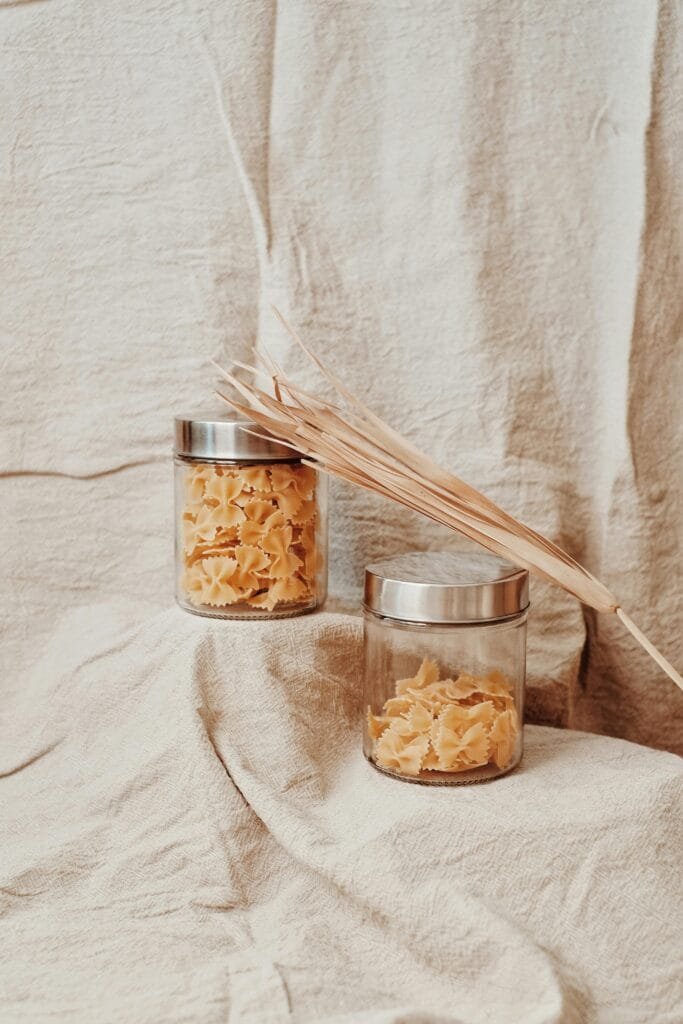
It’s wonderful how many gluten-free pasta options we have today. That wasn’t always the case! And while I love the convenience of store-bought gluten-free pasta, I recently had guests over who love their pasta but watch their calories and carbs. That got me thinking about alternative options like zucchini, summer squash, spaghetti squash, and Shirataki noodles. These aren’t just gluten-free; they’re naturally lower in carbs, packed with nutrients, and work beautifully in a variety of dishes. The best part? They’re fresh, light, and easy to prepare, yet they still satisfy pasta cravings when paired with your favorite seasonings and sauces. Let’s take a look at some of the best gluten-free pasta alternatives available today.
Zucchini & Summer Squash
NoodlesZucchini and summer squash noodles have become incredibly popular—today’s version of “spaghetti squash.” Whether shredded, julienned, or turned into spirals, these inexpensive, low-calorie pasta alternatives give you a big veggie boost. They can be served raw, steamed, blanched, or sautéed—I prefer the last.
Making Zucchini Noodles
I’ve tried various tools: a grater, a mandolin, and now a can’t-live-without-it spiralizer that turns zucchini into long spirals. If you plan to make a large batch or serve zucchini noodles often, a spiralizer is the fastest, easiest, and safest option. Before I bought mine, it took me an hour to prep five pounds of noodles. With the spiralizer? Less than 15 minutes!
If using a grater or mandolin, consider cut-resistant gloves (sometimes called “no-cry gloves”) to protect your fingers. And always use the safety guard with a mandolin.
Spiralizer recommendation: Brieftons 5-Blade Spiralizer
Cut-resistant gloves: NoCry Cut-Resistant Gloves
Cooking Tips
Peeling (Optional): The skin is nutrient-rich but can sometimes taste bitter, especially if the zucchini is large. If using a flavorful sauce, peeling isn’t necessary.
Removing Moisture: Zucchini naturally contains a lot of water.
To prevent soggy noodles:
Sprinkle salt over the noodles, let sit for 30 minutes, then pat dry.
Blanch for 2 minutes in salted boiling water, rinse with cold water, and pat dry.
Cooking Time: A quick sauté (1-2 minutes) in olive oil with garlic, salt, and pepper makes for a simple, delicious dish.
Nutritional Info: One medium zucchini has 33 calories, 2.37g protein, 6.1g carbs, and 2g fiber. It’s a great source of vitamins A & C and potassium.
Spaghetti Squash
Spaghetti squash has been a staple in health-conscious and gluten-free cooking for years. Its mild, slightly sweet taste pairs well with various sauces, making it an excellent pasta alternative.
How to Cook Spaghetti Squash
Prep: Wash, dry, and carefully cut in half (crosswise for longer strands). Remove seeds.
Cooking Options:
Bake: Roast at 375°F for 45-90 minutes with olive oil, salt, and pepper.
Boil: Simmer in salted water for 15-20 minutes.
Steam: Steam for about 20 minutes.
Microwave: Place in a dish with 1/4-inch water and cook in 5-minute increments until soft.
Shred: Once cooked, scrape the strands with a fork and serve with your favorite sauce.
Spaghetti squash available online: Spaghetti Squash (Fresh)
Nutritional Info: One cup of spaghetti squash has 42 calories, 10g carbs, and is rich in folic acid, potassium, vitamin A, and beta carotene.
Shirataki NoodlesShirataki noodles, also called Konnyaku or Miracle Noodles, are made from glucomannan fiber derived from the konjac plant. They’re very low-calorie, nearly carb-free, and gluten-free, making them an excellent choice for those looking to cut carbs while enjoying a pasta-like experience.
How to Prepare Shirataki Noodles
Drain & Rinse: Shirataki noodles come packaged in liquid, which can have a slightly fishy smell. Rinse well under hot water.
Boil (Optional): Boil for 2-3 minutes to improve texture.
Dry-Fry: For the best texture, dry-fry them in a pan for a minute or two before adding sauces or seasonings.
Shirataki noodles work well in stir-fries, soups, and Asian-inspired dishes. They absorb flavors beautifully but have little taste on their own.
Shirataki Noodles Available Online: Miracle Noodle Shirataki Noodles or
Better Than Noodles Shirataki
Nutritional Info: Shirataki noodles have 0-10 calories per serving, nearly 0g carbs, and contain fiber that may help lower cholesterol and blood sugar (Healthline).
Final Thoughts
These pasta alternatives aren’t just for gluten-free eaters; they’re great for anyone looking for healthier, lower-carb options without sacrificing flavor or texture.
Try experimenting with different cooking methods and seasonings, and you might find a new favorite way to enjoy pasta night!
Sources:
Healthline: Shirataki Noodles: The Zero-Carb Wonder
USDA FoodData Central: Zucchini Nutrition
USDA FoodData Central: Spaghetti Squash Nutrition